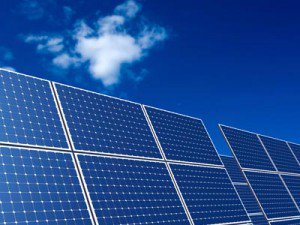By Brett Wilkins Driven significantly by dramatically reduced fossil fuel imports following Russia’s invasion of Ukraine, solar production soared nearly 50% in the European Union...
Archive for category: Solar

Energy Solidarity: A Southern Italy Solution to Energy Poverty
By DR. MIRIAM ACZEL In San Giovanni a Teduccio, a coastal suburb in Naples, a new people-driven project has become Italy’s first renewable “solidarity...

The Inflation Reduction Act: How Does It Benefit Everyday Americans?
By DR. MIRIAM ACZEL and KATE RINGNESS On August 16, 2022, President Joe Biden signed the Inflation Reduction Act of 2022 (IRA) into law, which...

Biden’s New Low-Income Solar Power Program Hailed as ‘Vital’ for People and Planet
By JENNA MCGUIRE “Let’s keep those executive actions coming—and use them not only to build renewables, but also to shut down fossil fuels,” said Jamie...

Solarize: the Grassroots Initiative that Cut Solar Costs up to 35%
By Jerold Brito Back in 2009, solar panels were not nearly as widely used as they are today. At the time, solar power generation in the...

‘So What Are You Waiting For?’ Say Climate Campaigners After IEA Says Solar Now ‘Cheapest Electricity’ in Human History
By Andrea Germanos Solar “is on track to set new records for deployment every year after 2022.” Solar is on track to be the “new...

Indian Prime Minister Modi: A UN Climate Champion
By UTKARSH VIVEK On October 3rd the Prime Minister of India received the United Nation’s Champion of the Earth Award in the Policy Leadership Category for his...

Workshop Explores Local Government Clean Energy Financing Alternatives
By MELISSA CHRISTENSEN Representatives from six local governments in Northern Virginia attended a workshop on budget-neutral, clean energy alternative financing options for local governments at the...

Virginia’s rural co-ops learning lessons with community solar
Last month, the Virginia State Corporation Commission (SCC) approved three-year pilot community solar programs for four distribution co-ops served by the Old Dominion Electric Cooperative (ODEC), based in the Richmond suburb of Glen Allen. They are A&N, Mecklenburg, Northern Neck and Rappahannock. In addition, applications by two other distribution co-ops also served by Old Dominion — Shenandoah Valley and Southside — are pending before the SCC.

Connecting Individuals with Solar Jobs
How does someone get a job in the solar energy industry? 90% of employers in the Mid-Atlantic area find it either somewhat or very difficult to hire qualified individuals, according to The Solar Foundation’s 2017 Solar Jobs Census. And solar jobs pay well; an installer job pays on average $20 an hour. So how do we bridge the gap between inexperience and jobs?
The answer – job training.


